New display of First World War postcards
The postcard concept had its origins in Germany and the United States in the middle of the nineteenth century. By the outbreak of the First World War, millions of postcards were being sent across the world via postal services. The phenomenon of collecting postcards was also well and truly established.
A new display featuring images of women from the First World War postcard collection, is currently showing in the Australian War Memorial’s Reading Room.
The Memorial has a rich collection of postcards that servicemen sent to family and friends, and also those they collected for themselves. Many of these postcards depict images of women. In this display, several prominent themes are featured.
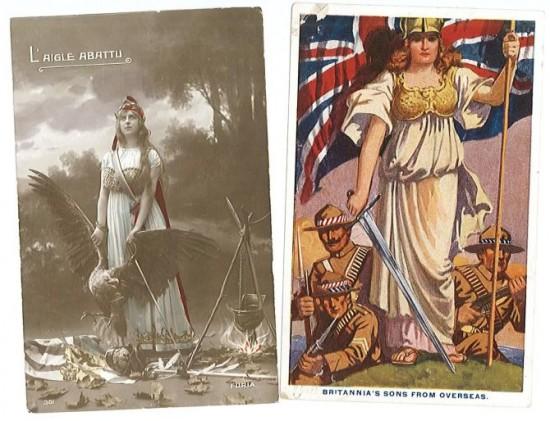
“Women in Uniform” encompasses symbolic nationalistic images such as Britannia and La France, as well as photographs of the women’s war effort. Thousands of allied women worked as nurses, in factories, in general services and on public transport. Images of the British war effort were used for propaganda purposes, and postcards of women working in these capacities were released in several languages.
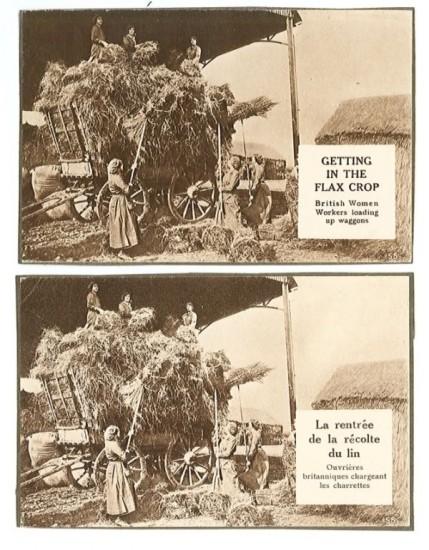
Romantic images form the largest category of postcards of women. The sweetheart image was ubiquitous and we hold German, French, English, Egyptian and Australian examples. The woman writing to her sweetheart or waiting for news from him, became an iconic image of the time.
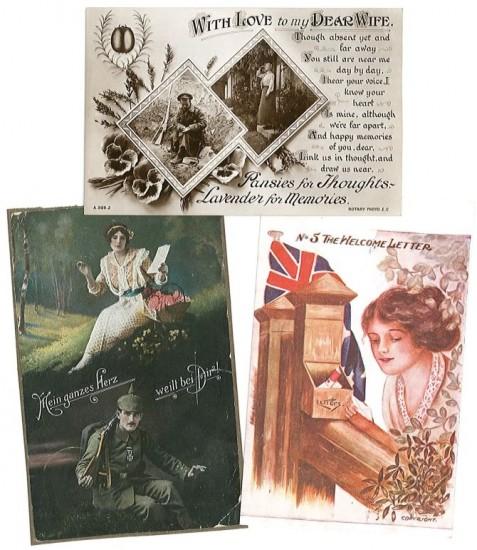
Portraits of beauties were popular to send to loved ones, friends and girlfriends. Glamorous postcards of actresses, the pin-ups of their age, were also widely collected. When looking at these postcards, a shared ideal of beauty and perception of fashion emerges that traversed national boundaries.
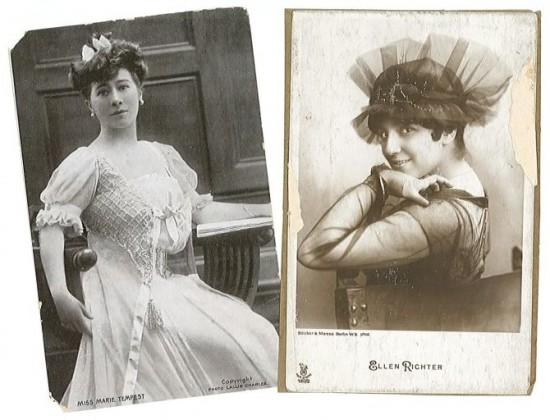
The First World War enabled many Australians to visit countries, that they would have financially have been unable to reach. The soldier-tourist collected postcards of these places. Scenes of women in daily life and wearing traditional dress, were among the customary postcards available from these countries.
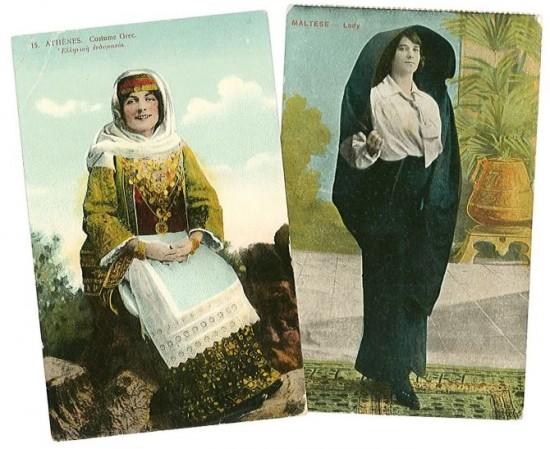
A novel category for the soldier-tourist were French risqué postcards. Not available to any large extent at home, servicemen took full advantage of the opportunity to purchase these witty and stylishly illustrated cheeky cards.
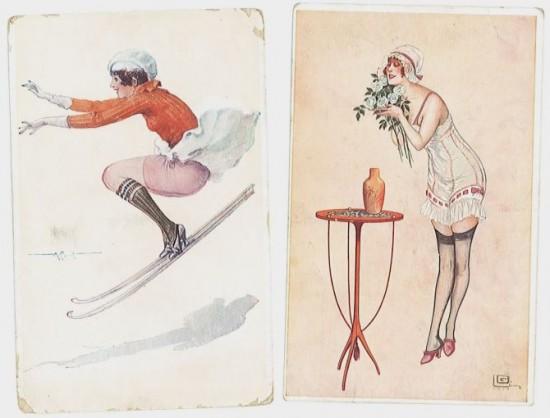
For this display, paper flowers have been scattered amongst the postcards to either reflect national flag colours or to mirror the hand-tinted colours used in many of the postcards from the First World War. Our local scrapbooker, Assistant Curator Kim Giannasca, created and matched these flowers especially for the display.
The display will be on for six months. The Reading Room is open Monday to Friday from 10am to 5pm, and on Saturday from 1pm to 5pm.